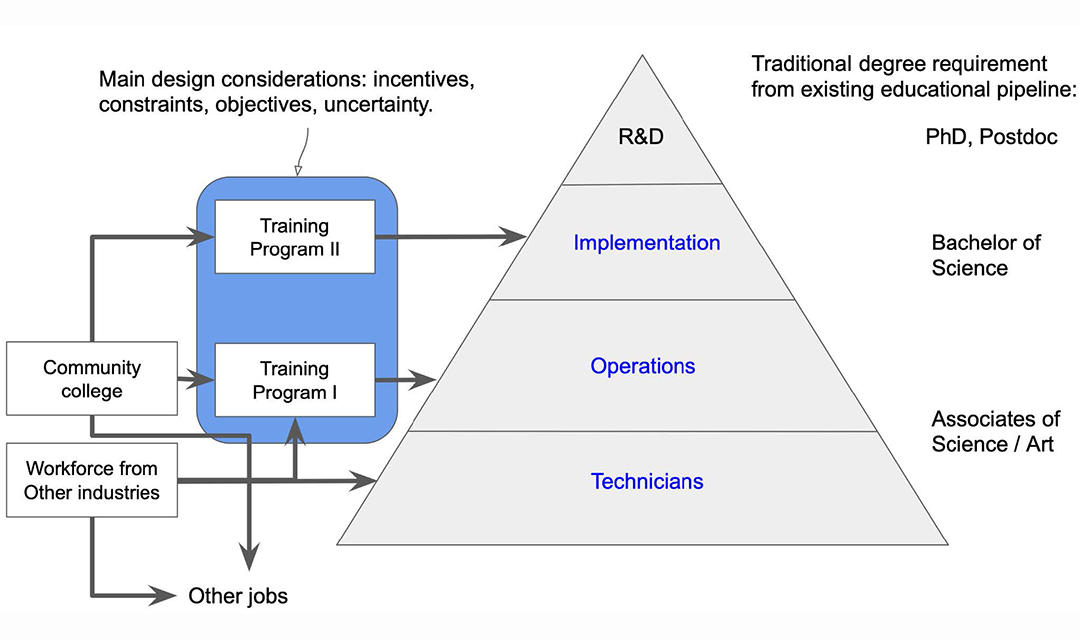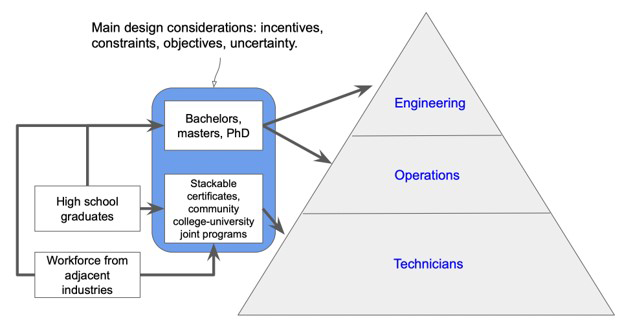
This project anticipates and addresses workforce supply shortage issues in critical industries, with a specific focus on the advanced manufacturing and semiconductor sectors, addressing the challenges in attracting and retaining a skilled workforce. Researchers take an analytical approach that involves formulating the problem using a bilevel optimization method. This tool allows them to model the interactions between two decision-making entities: the semiconductor companies (leaders/first movers) and the workforce (followers/second movers). Their objectives are twofold: to fill jobs in a competitive landscape, and to maximize long-term profit and talent retention, focusing on strategies that foster a sense of growth, development, and loyalty among the workforce. The design of incentives is a central component of the model. This includes financial incentives, job guarantees, benefits for parenting, and career advancement opportunities. The model explores various incentive structures to identify those that are most effective in encouraging workforce participation in retraining programs. It incorporates uncertainty for both firms and workers, such as the success rate of training programs, changes in market demands, job offer success rate, and technological advancements. Additionally, the model accounts for the risks and bounded rationality of both parties.

